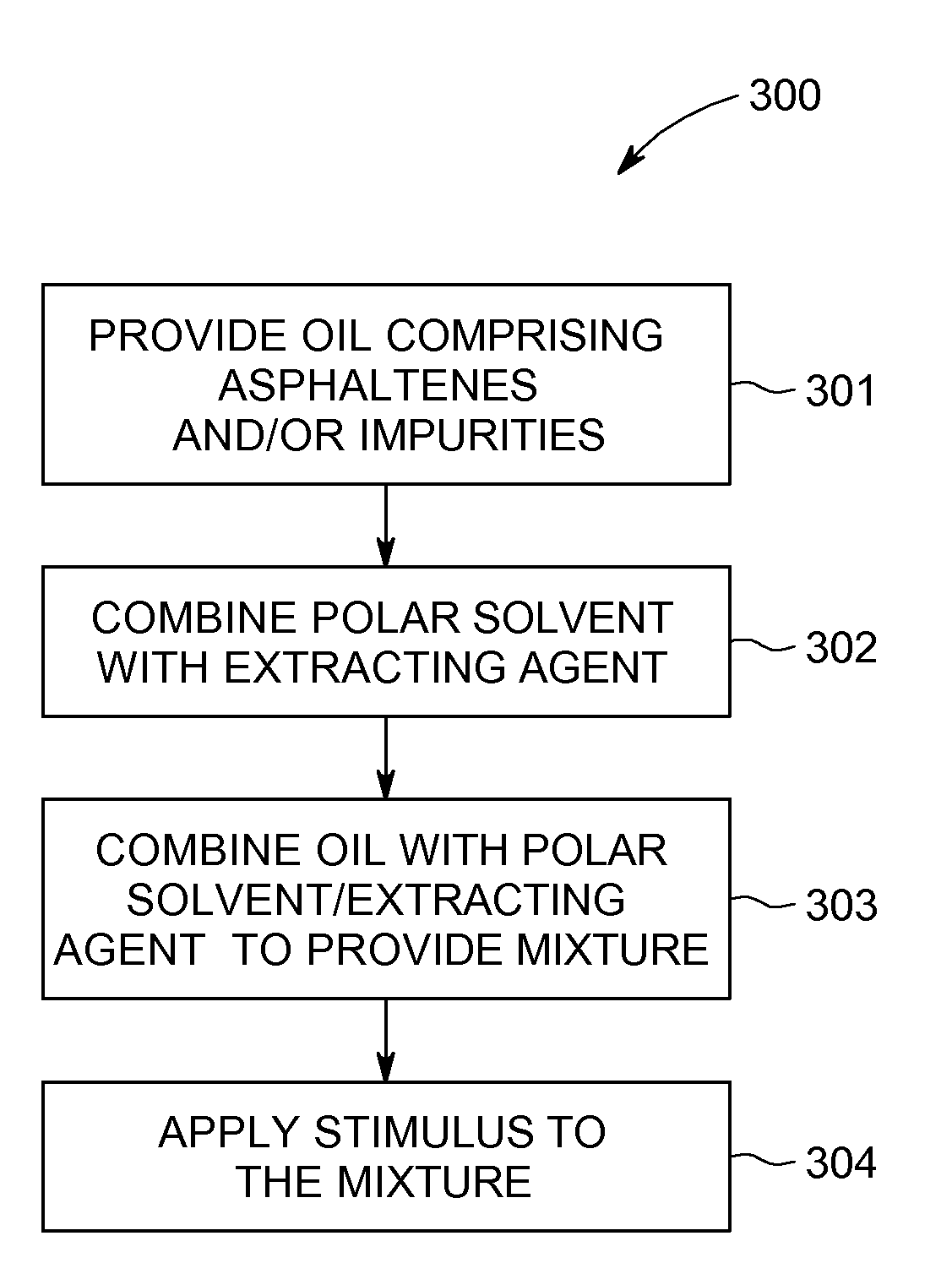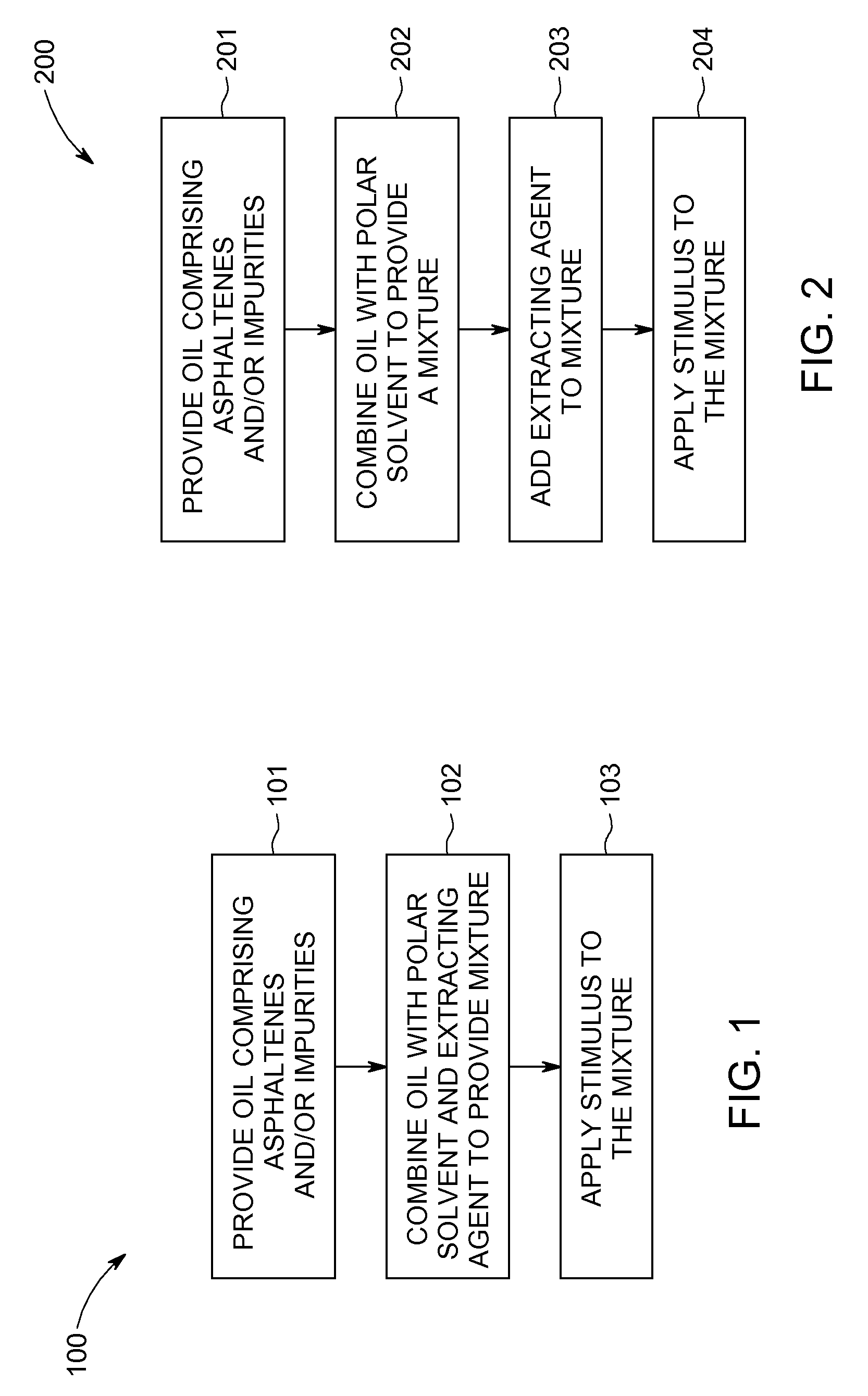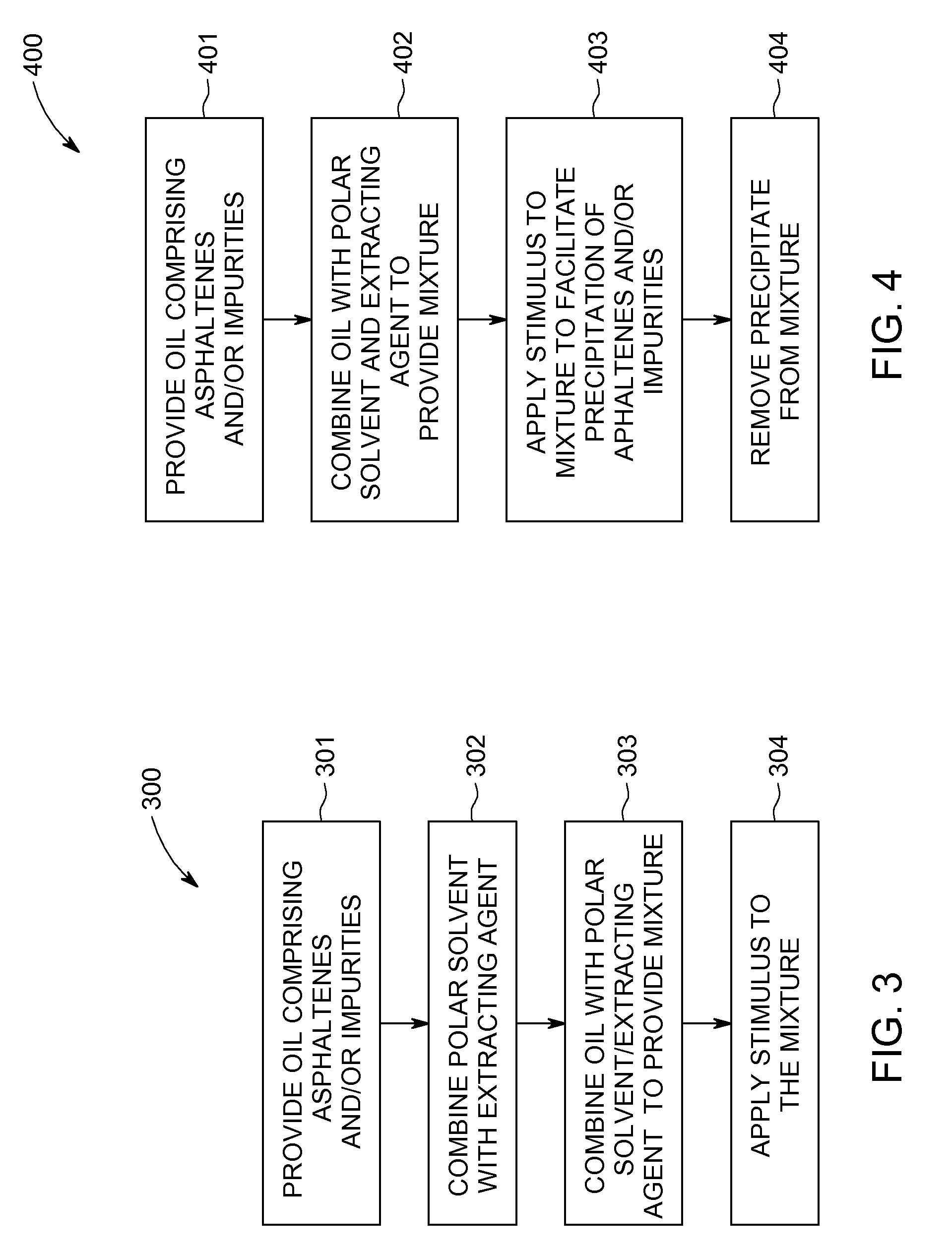Method for deasphalting and extracting hydrocarbon oils
a hydrocarbon oil and hydrocarbon technology, applied in the field of hydrocarbon oil deasphalting and extraction methods, can solve the problems of contributing to particulate emissions, forming acid rain, and vanadium present in crude having a deleterious effect on refinery operations
- Summary
- Abstract
- Description
- Claims
- Application Information
AI Technical Summary
Benefits of technology
Problems solved by technology
Method used
Image
Examples
example 1
[0042]To a 15 ml centrifuge tube was weighed 0.39 g of iron (III) chloride. 6 g of diethyl ether (DEE) was added to dissolve the FeCl3. This solution becomes a solvent for deasphalting and S- and V-targeting agent. 3.52 g of HFO was added. The mixture was vigorously shaken until the HFO appear to “dissolve” completely in the DEE / FeCl3 solution. The resulting mixture was centrifuged at 2100 rpm for 10 minutes. The residual diethyl ether in the supernatant was dried off at room temperature to constant weight before % S measurement was done by XRF. Total supernatant recovered was ˜78% of the starting oil and the residual sulfur was 2.35 wt. %.
example 2
[0043]To a 50 ml centrifuge tube was weighed 5.0 g of iron (III) chloride. 10 g of diethyl ether was added to dissolve the FeCl3. This solution becomes a solvent for deasphalting and S- and V-targeting agent. 10.0 g of HFO was added. The mixture was vigorously shaken until the HFO appear to “dissolve” completely in the DEE / FeCl3 solution. The resulting mixture was centrifuged at 2100 rpm for 10 minutes. The residual diethyl ether in the supernatant was dried off at room temperature to constant weight before % S measurement was done by XRF. The residual sulfur was 1.67 wt. %.
PUM
| Property | Measurement | Unit |
|---|---|---|
| pressure | aaaaa | aaaaa |
| pressure | aaaaa | aaaaa |
| pressure | aaaaa | aaaaa |
Abstract
Description
Claims
Application Information
 Login to View More
Login to View More - R&D
- Intellectual Property
- Life Sciences
- Materials
- Tech Scout
- Unparalleled Data Quality
- Higher Quality Content
- 60% Fewer Hallucinations
Browse by: Latest US Patents, China's latest patents, Technical Efficacy Thesaurus, Application Domain, Technology Topic, Popular Technical Reports.
© 2025 PatSnap. All rights reserved.Legal|Privacy policy|Modern Slavery Act Transparency Statement|Sitemap|About US| Contact US: help@patsnap.com



